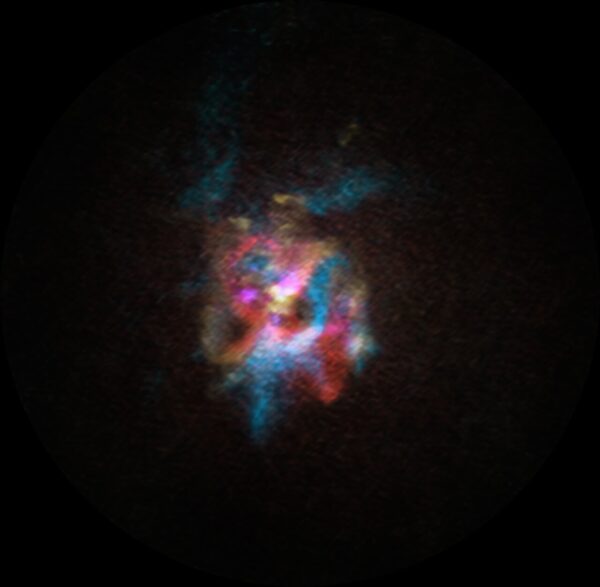Cosmo Stephenson 2 DFK 52
Today’s Picture of the Week is reminiscent of the 3D images that you require flimsy paper red and cyan glasses to properly view. What we’re seeing in this photo is actually a red supergiant star expelling a cloud of gas and dust as it nears the end of its life. These nebulae are common around supergiant stars; however, this particular cloud presents an unexpected and considerable mystery for astronomers.
This is the largest cloud of ejected material to have been found around a supergiant star, at an enormous 1.4 light years across. Astronomers studied this star, Stephenson 2 DFK 52, with the Atacama Large Millimeter/submillimeter Array (ALMA) while studying other supergiants in its vicinity. DFK 52 is rather similar to Betelgeuse, another famous red supergiant, so they were expecting to see a similar cloud around it. However, if DFK 52 was as close to us as Betelgeuse is, the cocoon around it would be as wide in the sky as a third of a full Moon.
These new ALMA observations allow astronomers to measure how much material surrounds the star and how fast it is moving. The parts that are moving towards us are highlighted in blue, and the sections that are moving away, in red. The data show that about 4000 years ago the star went through an episode of extreme mass shedding, and then slowed down to its current rate, more similar to that of Betelgeuse. DFK 52 is estimated to be 10-15 times more massive than the Sun, and by now it has already lost 5-10% of its mass.
It’s still a mystery as to how the star managed to expel so much material in such a short timeframe. Could it be an odd interaction with a companion star? Why is the shape of the cloud so unusually complex? Are there more supergiants like this out there? Deciphering why DFK 52 has already shed so much material will help astronomers understand how it will meet its end: a supernova explosion sometime in the next million years.
